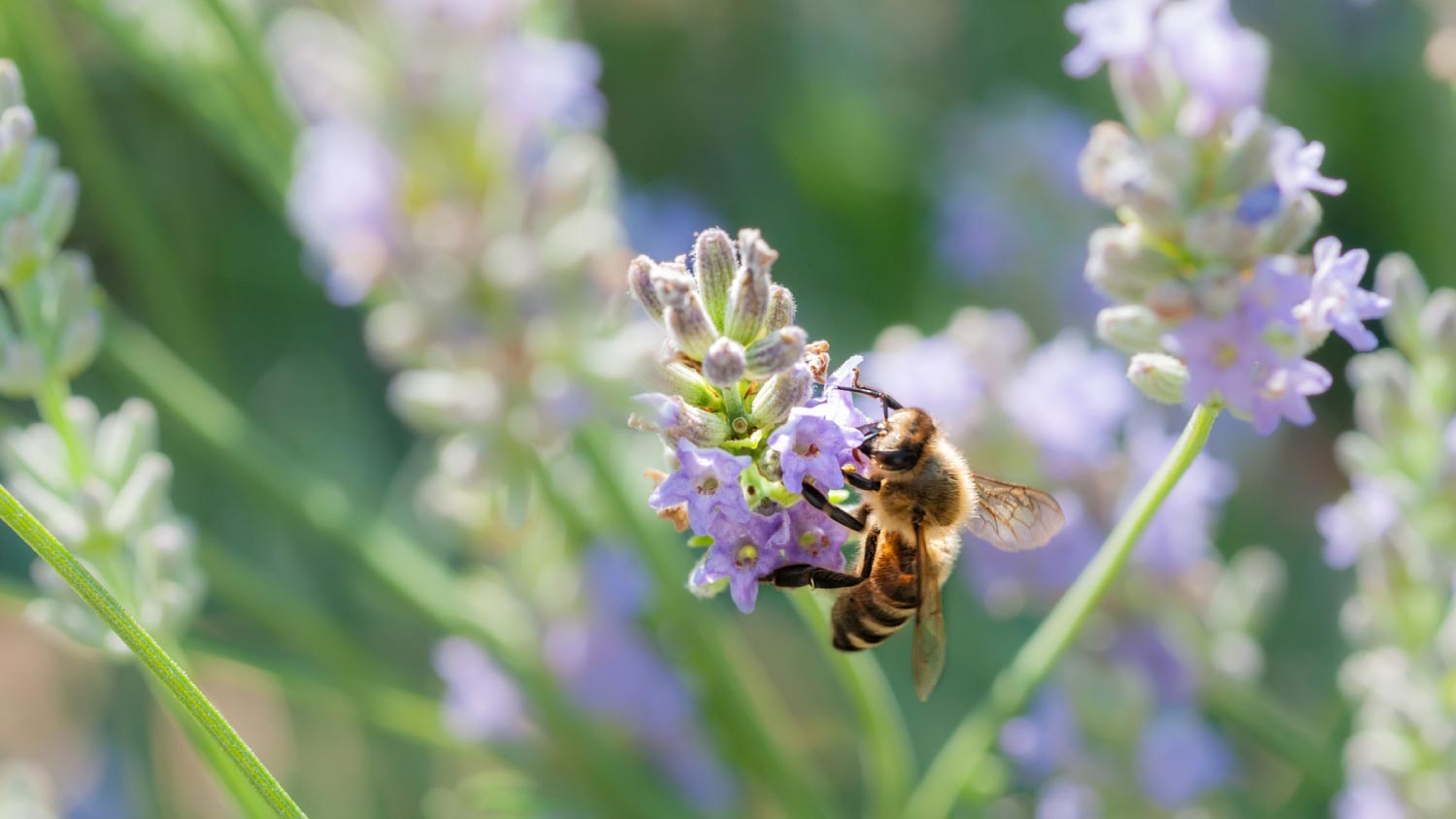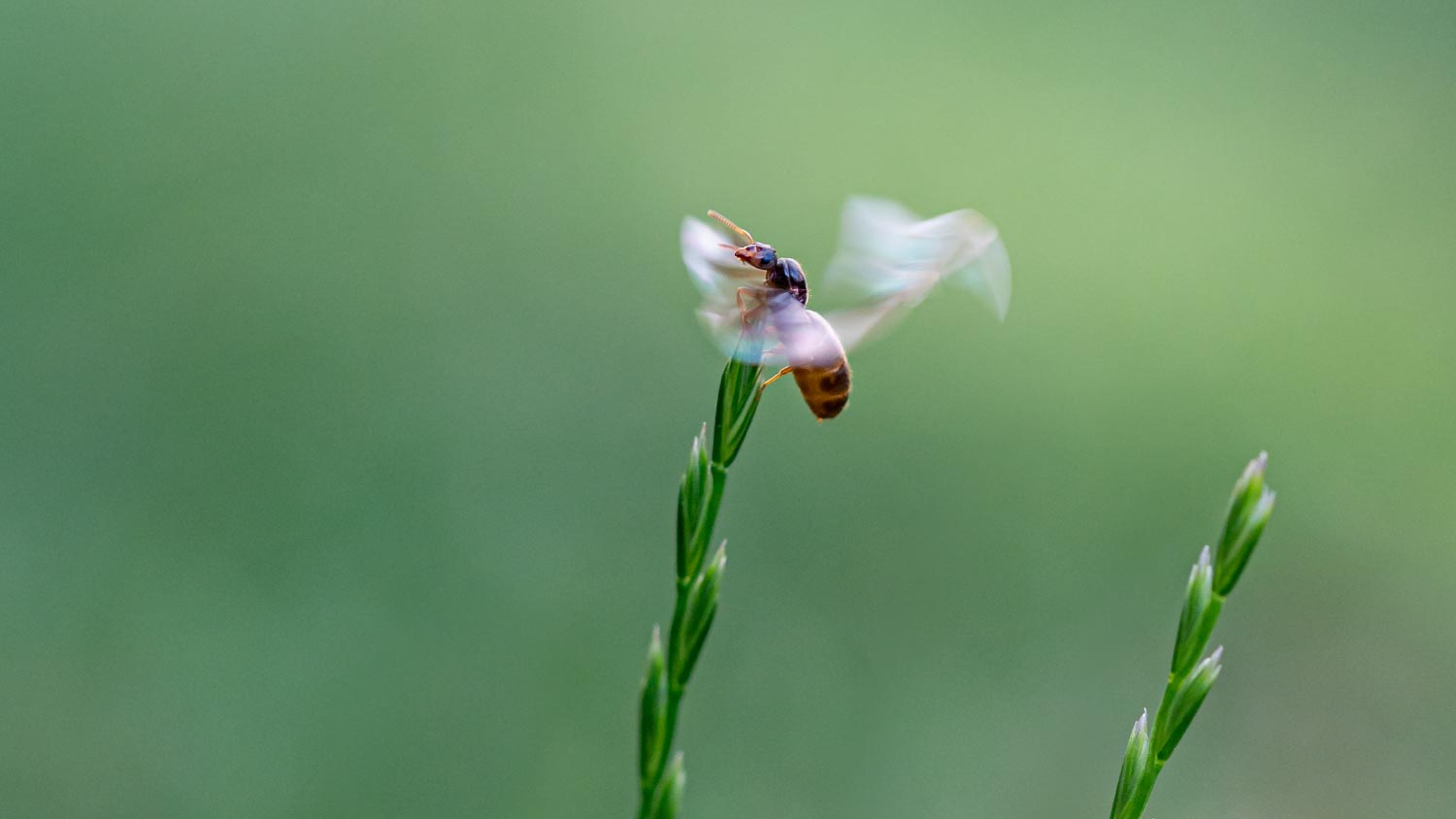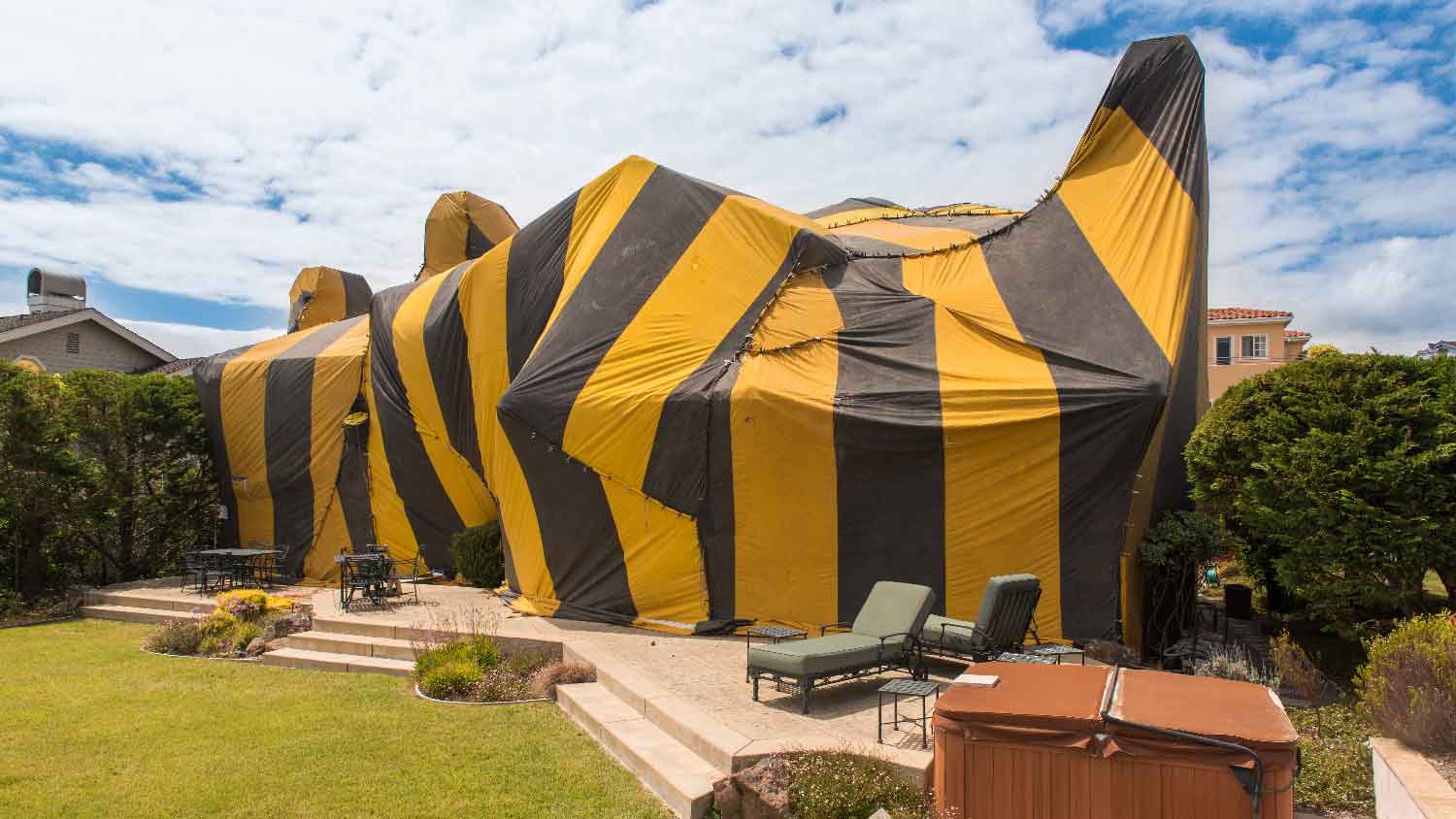
If you discover a wasp nest near your home, you’ll want to remove it ASAP. Learn wasp nest removal cost factors in this guide.
These little buggers have a certain air about them


Pests are bad enough, but dealing with ones that can fly is an annoyance on another level. If you know what you're up against, you can better equip yourself to handle them when they enter your home. In this guide, we’ll give you 12 tips on identifying various species of winged insects commonly found in your home.
Flies are of the Diptera order and are commonly found throughout the world. They all really don’t know how to respect personal space, but which one are you dealing with in your home? We’ll discuss various types and how to identify them below.
Those annoying houseflies determined to avoid a swatter as they are to buzz in your face are common in most homes across the country. They can carry harmful bacteria and diseases, such as cholera and typhoid. They’re approximately 6 mm long, have noticeable red eyes, dark gray oval bodies, and a striped thorax.
Besides their appearance, you can identify houseflies by where they get their meals. They feast on rotten substances such as fruits, vegetables, fecal matter, or anywhere there’s trash. Another sign you’re dealing with houseflies is they only come out during the daytime, not at night.
While these fuzz balls aren’t known to spread diseases, they can spread bacteria. Drain flies are 1 1/2 to 5 mm long, with grayish or tan bodies covered in hair, giving them their fuzzy appearance. These flies are commonly found in drains, sewers, or anywhere with stagnant water or covered with organic material.
These flies are typically hovering around (or on) ripe fruits and vegetables in your kitchen. They’re 2 to 5 mm long with red or dark eyes, have beige, tan, gray, or black bodies, and are one of the most common kitchen bugs you’ll find in your home. Since they come in so many colors, the best way to identify them is by where they get their meals.
Blowflies (also known as greenbottle or bluebottle flies) are known by their larvae state as maggots. They can potentially transfer diseases and illnesses, such as dysentery and eye infections. As adults, blowflies are metallic blue or green with red-hue eyes. These flies act similarly to houseflies but are typically the first organism on the scene with decaying material, such as old food in the trash can.
While cluster flies don’t carry diseases or excrete their droppings on human food, these relatively large species can still potentially attract other insects when they die. Cluster flies are 8 to 10 mm long and have light and dark checkered abdomens with golden hairs on their thorax. These insects are commonly found in attics and walls near natural or artificial light. They’re looking for a warm place to stay, so they’ll typically appear in the spring, fall, or winter months.
Also known as humpbacked flies, phorid flies can spread bacteria and diseases. These flies are 1/2 to 5 mm long with a black, dull brown, or yellowish body. They might look like fruit flies and act like gnats, but their arched thorax—which gave them the humpbacked name—is the easiest way to identify them. These insects eat decaying organic matter, such as spoiled food, and are commonly around moist areas, such as the kitchen and bathroom. You can also identify phorid flies by how they move since they’re known to scurry across screens and walls.
Fungus gnats are grayish-black and 2 to 8 mm long. Some homeowners may confuse them with fruit flies, but fungus gnats have thinner bodies, longer legs, and antennas. They also tend to fly erratically. They’re harmless to humans but are attracted to any moist climate and organic material, like houseplants or decaying food.
Wasps are insects of the order Hymenoptera. If you’ve ever gotten on a wasp's bad side, you know how much that hurts. While they’re commonly found outside in gardens and yards, they do seek new food sources or nests, which unfortunately might be inside your home. Here are different types of wasps and how to tell them apart.
Paper wasps are about 1/2 inch long with a narrow waist, dark brown bodies, and yellow markings around their abdomens. One easy way to identify these wasps is through their orange antennas. Since they’re pretty aggressive (they’ll sting if you get too close!), keep your distance if you spot one.
True to their namesake, yellow jackets are black and yellow buggers with smooth bodies, six legs, and 1/2 an inch long on average. Besides their appearance, you can also distinguish them by what they like to eat: Their diet consists mainly of other pests, but they also like sweets or proteins.
Hornets are the largest type of wasp with dark brown bodies and red, yellow, and orange markings. They can grow up to 2 1/2 inches, though they average around 1 1/2 inches.
Mud daubers are 1-inch long bluish-black or yellow and black wasps with six legs. To find out if you have this wasp near your home, look for cylinder-shaped nests made out of mud. Another way to identify them is through their thin connection between their thorax and abdomen.

While bees don’t go out looking for trouble, you can find yourself on the receiving end of their stinger if they feel threatened—even if they’re in your home. Let’s look at the different types of bees so you can tell them apart from each other and wasps.
If you’re a honey lover, you probably know a thing or two about where it comes from: honeybees. These insects are 1/2 inch long with dark brown or black bodies and yellow stripes, a fuzzy head, thorax, and a smooth abdomen.
You can identify bumblebees based on their appearance. They’re relatively large with stocky, furry bodies.
At first glance, carpenter bees look like bumblebees, but unlike their pollen-collecting cousins, they have smooth, shiny black or blackish-blue abdomens, a fuzzy thorax, and are 3/4 inch long. These bees are also known for burrowing into wood and creating nests, which can pose problems for your property.
Moths are of the order Lepidoptera. Some of the most common moths found inside homes aren't the ones causing you trouble—it's their larvae. Let's look at the different types of moths and where they leave their mark.
While adult brown house moths aren’t harmful, they can quickly become an annoyance when they enter your home, lay eggs in your food, and their larvae eat your dried fruits, vegetables, grains, clothing, and even leather and wool. Their bodies are reddish-brown or brownish-gray with brown or black patches on their wings. They also grow 8 to 26 mm long.
Also known as just flour moths, they’re 3/4 inch long, with a pale gray color and black wavy lines on their wings. These moths lay eggs in household food such as beans, cereal, flour, and grains. While the moths themselves don’t eat your food, the eggs they lay do when they turn into larvae. Besides the moths themselves, you can identify this moth species if you see silken threads in your dry pantry food.
Two common types of cloth moths found in homes across the country are webbing moths and casemaking moths. They’re both 1/4 inch long and love making a habitat and meals out of your fabrics, like wool and fur. While webbing cloth moths are gold to yellowish-gray with reddish-gold or copper fur, their larvae are creamy white with dark heads. Casemaking cloth moths are gold with light gold fur and brownish wings with spots. Casemaking larvae have pale yellow to white bodies with dark heads.
Beetles are of the Coleoptera order and are common bugs known to both help and hurt the environment. But which one is in your home, and how can you tell? Find out below.
A carpet beetle is 1 to 4 mm long with a black, white, and yellow oval-shaped body. These flying bugs breed larvae that feed on fabric, such as furniture upholstery, clothing, and rugs made from wool, silk, and feather. While the adult version doesn’t eat through your comfy furniture, their presence is a good indicator you might have the baby version enjoying your fabric somewhere.
These beetles are 2 to 3 1/2 mm long with a brown, oval-shaped body. Don't let their name fool you, though. While they're called drugstore beetles, they also enter homes and feed on stored food, such as grains and cereal. Some of the places you might see them are on your kitchen countertops, but you can identify drugstore beetles in your home by the mess they leave behind. You'll see small holes in your food or lump-shaped droppings.
Mosquitoes are 2 to 19 mm long with grayish-brown to black bodies with white, silver, green, or blue scales and white stripes on their abdomen. These blood-sucking bugs have been known to carry viruses like Zika and West Nile. Plus, they pack a nasty insect bite.
Some homeowners have encountered this nuisance. And yes, some of them, like the Asian, brown, smokybrown, and wood cockroaches, fly. It's worth noting that most flying roaches are located in certain regions across the country. For example, Asian roaches are common in warm climates like Florida, while you can find wood ones in woodland areas, including Iowa.
You can identify them by their oval-shaped body and reddish-brown appearance. Their size ranges from 3/4 to 3 inches long, and they can feed off anything and everything from glue to garbage.
Stink bugs can be up to 2 cm long with green, brown, or grayish bodies. While these bugs prefer gardens, they can potentially fly into your home during the colder months for shelter. You can identify stink bugs through their shield-like appearance and, of course, their smell.

Flying ants have black, brown, or reddish bodies, are 7 to 12 mm long, and have one set of larger and smaller wings. They also have bent antennas and a thin waist, making it look segmented or pinched, and they eat nectar, other bugs, seeds, and garbage.
On first glance, you can easily mistake flying ants and termite swarmers because of their similar appearance. Termite swarmers are 3/8 inch long, with a black or brown body, straight antennas, two uniform-size sets of wings, and a thick waist. They also feast on wood and paper. If you identify a winged insect as a termite swarmer, contact your local pest control company to assess the situation for you.
While their name gives the impression that they’re part of the fly family, these little buggers belong to the true bug or Hemiptera order. Whiteflies are known for their white appearance, are approximately 2 mm long, and feed on your plants. They also release honeydew onto your plants, which can cause them to start molding and lead to other insect problems, like an ant infestation.
While most homeowners wouldn't mind a colorful butterfly flying around, they're frequently confused with their cousin, the moth. There are multiple butterfly species, but their vibrant color is the easiest way to tell them apart. They also have smoother, leaner bodies compared to moths. And when butterflies land, they fold their wings back instead of letting them stay open.
From average costs to expert advice, get all the answers you need to get your job done.

If you discover a wasp nest near your home, you’ll want to remove it ASAP. Learn wasp nest removal cost factors in this guide.

Tenting is a costly but effective way to exterminate termites. Learn the average termite tenting cost and everything that will factor into your budget.

Sometimes birds nest in unwelcome places. Find out how much bird nest removal will cost based on factors like location, bird species, and preventative measures.

Is pest control worth it? Learn how a pest control plan works, how much it can cost, and the benefits of calling in the pros.

Learn how to bomb your house for roaches safely using store-bought foggers for DIY house fumigation.

Is it a common house spider or a brown recluse? Learn how to identify a brown recluse spider so you know how to handle it.